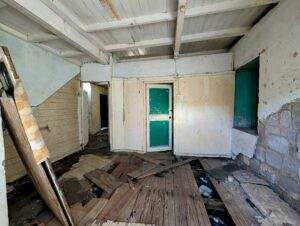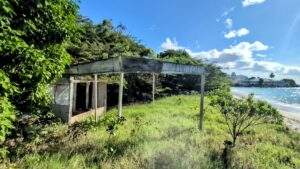Abandoned St Kitts and Nevis: Mountravers Plantation | Urbex
Mountravers Plantation or known locally as ‘Pinney’s Estate’ was a sugar plantation on the Caribbean Island of Nevis. The Plantation was established in the 17th Century and continued until slavery was abolished in 1834. During this time over 900 enslaved people lived at Mountravers. Channel 4’s Time Team recorded a two-part archaeology programme in 1998-9 about the history of the plantation. A notorious flogging at the plantation in 1810 fuelled the debate about abolishing slavery.


History
In 1685, Azariah Pinney landed in Nevis on the ship The Rose Pink. Azariah had been given a pardon by James II for his part in the Monmouth Rebellion on the condition that he spent 10 years in the West Indies. His brother, Nathaniel, was a London merchant and a member of the Royal African Company. He traded in enslaved people and other commodities. Azariah became his brother’s agent and imported goods like lace to sell to the Europeans who owned plantations in Nevis. He also bought produce made in Nevis like sugar to sell to the English. He also managed estates for ‘absentee’ plantation owners who chose to live in Britain and run their land through a manager. Azariah started to buy property on Nevis and his son John married the heir to the Proctor Plantation and eventually their land combined to 273 acres and was named Mountravers.
John Pretor Pinney inherited the estate and arrived in Nevis in 1682. He inherited a run down estate with aging enslaved workers and a load of debts. John Pinney quickly built up the plantation by buying more enslaved people. He grew the size and number of the estates alongside the number of enslaved people. Pinney owned between 170-210 people on his 394 acre plantation.


Pinney left Nevis in 1783 alongside his family and moved to Bristol. He left Mountravers to be run by managers in his absence. However after the slave trade became illegal in the British colonies in 1807, Pinney decided to sell Mountravers. His Nevis neighbour- Edward Huggins was keen to buy but Pinney didn’t want to sell to him because Huggins was known to be cruel to his slaves. Reportedly they had tried to kill Huggins five times! Unfortunately when the buyer for the estate pulled out of the sale Pinney did sell to Huggins. He sold it for £35,650 or around £1.75m today. The 183 enslaved people were valued at £65 each – £3,250 today.


In 1810 the enslaved people rebelled against their new owner. Huggins publicly retaliated by flogging 32 of them. One lady, Fanny, died a few months later. Huggins was tried for cruelty where an eyewitness said that men were given 365 lashes and women 291. Huggins was later found not guilty. The trial caused uproar in Britain and this helped change public opinion about slavery. Soon after, a campaign started to free slaves in British territories.
Explore
We were taken on a hike across the Mountravers Estate and explored a tiny part of the once 394 acre plantation. We walked along the paths that were first trodden by enslaved people as they harvested sugar cane for the plantation owners. John Pinney had laid out the slave village in neat rows to ensure that if one timber house caught fire it did not cause devastation to the rest of them. The slave houses have not survived but the breadfruit and coconut trees that Pinney planted to feed his enslaved workers have. The local population of monkeys now enjoy feeding from these trees. We not only walked in the footsteps of the enslaved people who once lived and worked this land but we also were able to travel across the stone bridges that they built hundreds of years ago.


The buildings that are left behind unfortunately are not the ones that could reveal details about the enslaved people who lived and worked the land. There are a few stone buildings that we were given access to. These included the stone house where the Pinney’s lived, the stone mill and store house and the metal pot to turn sugar into molasses. The main house is slowly decaying and the landscape is taking over but the store house has been renovated and is still in use by the family who own the land.


The stone house built by the plantation owner at the top of the hill would have given the owners the perfect view of all of their land all the way down to the sea. It was here at the beach that the goods produced from the plantation were shipped across the world back to Britain. The beach is still known today as Pinney’s beach today, it’s the longest beach on Nevis at 4 miles long. The most expensive hotel on Nevis is also located here on old Mountravers Plantation land, the Four Seasons.

Last Updated on 24 February 2025 by Michael


